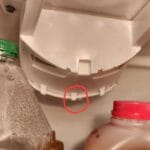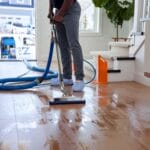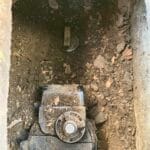Have you ever walked across your floor only to feel like you’re gliding on ice? The unsettling sensation of a slippery floor is something many people experience but rarely discuss.
It can catch you off guard, making you question the safety and integrity of your home. Imagine the peace of mind you could have if you understood exactly why your floor behaves this way and how you can fix it.
This isn’t just about avoiding an unexpected tumble; it’s about transforming your living space into a safe haven. Dive into the mystery of slippery floors and discover solutions that could change your everyday life. Your floor doesn’t have to be a hazard—let’s explore how you can reclaim control and confidence in your home.
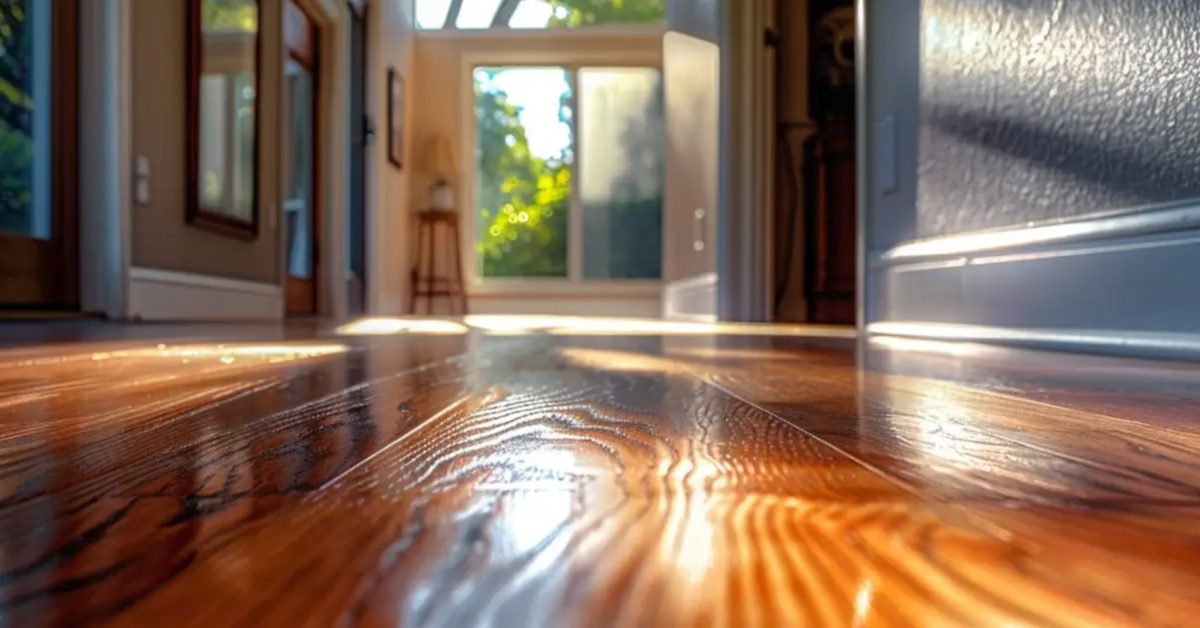
Credit: www.coit.com
Common Causes Of Slippery Floors
Floors become slippery due to spilled liquids, polished surfaces, or condensation. Regular cleaning and proper footwear can help prevent falls. Using non-slip mats and addressing moisture issues also ensures safer walking surfaces.
Have you ever found yourself gliding across your floor like a figure skater, not on purpose but because your floor is unexpectedly slippery? Slippery floors are more than just a nuisance—they can be dangerous. Understanding the common causes can help you address the issue effectively and keep your household safe. Let’s dive into some typical reasons why your floor might feel more like a skating rink than a safe walking surface.Wet Surfaces
One of the most common culprits of a slippery floor is moisture. Whether it’s from a spilled drink, a recent mopping, or even rain tracked in from outside, wet floors can spell trouble. It’s crucial to wipe up spills immediately and ensure that wet areas are dried promptly to prevent accidents.Polished Finish
A polished finish can make your floor look stunning but can also turn it into a slippery hazard. Many flooring types, such as tile or hardwood, are treated with sealants or waxes that enhance shine but reduce traction. Consider using non-slip mats in high-traffic areas or ask yourself if a high-gloss finish is worth the risk.Cleaning Residue
Have you noticed your floor feeling slick after you clean it? The culprit might be cleaning residue left behind. Using too much cleaner or not rinsing properly can leave a slippery film. Opt for cleaners designed for your specific floor type, and make sure to follow the directions carefully. Think about your own home. Are you guilty of leaving floors wet, over-polishing, or not rinsing properly? Identifying these common causes can help you take proactive steps to make your floors safer. Your safety is in your hands, and a few simple changes can make a big difference.Floor Material And Its Impact
Floor materials affect how slippery your floor feels. Each type reacts differently to moisture and usage. Understanding this can help prevent slips. Let’s explore how different materials contribute to slipperiness.
Tile Floors
Tile floors are popular for their durability and style. Yet, they can be slippery. Especially when wet. Ceramic and porcelain tiles have smooth surfaces. This makes them prone to slipping.
Polished tiles increase the risk even more. Textured tiles offer better grip. Choosing the right finish helps reduce slipperiness. Regular cleaning is essential. It prevents soap or residue buildup that makes tiles slick.
Wooden Floors
Wooden floors bring warmth and elegance to homes. But they can be slippery too. Especially when polished. The finish on wooden floors impacts traction. High-gloss finishes are more slippery.
Opt for matte or satin finishes for better grip. Moisture affects wood, causing it to become slick. Keep wooden floors dry to maintain safety. Use rugs or mats in high-traffic areas.
Vinyl And Laminate
Vinyl and laminate floors are budget-friendly options. They mimic the look of wood or stone. Yet, they can be slippery, especially when wet. Their smooth surfaces lack natural grip.
Choose textured options for better traction. This helps reduce slipperiness. Regular cleaning prevents residue buildup. Spills should be wiped immediately. This keeps your floor safe for walking.
Environmental Factors
Have you ever wondered why your floor is suddenly as slick as a skating rink? Environmental factors play a significant role in making your floor slippery. Understanding these elements can help you tackle the issue effectively and prevent unexpected falls. Let’s dive into some specific environmental factors that might be affecting your floor’s traction.
Humidity Levels
Humidity can be a silent culprit when it comes to slippery floors. High humidity levels cause moisture to build up, especially on surfaces like tiles or hardwood. This moisture can make your floors dangerously slick. Have you noticed your bathroom floor is more slippery after a hot shower? It’s the humidity at work.
Consider using a dehumidifier in rooms that are prone to excessive moisture. This can help keep your floors drier and safer. Alternatively, ensure good ventilation to reduce humidity naturally.
Temperature Changes
Temperature fluctuations can also affect floor slipperiness. Warm temperatures might cause certain materials to expand and release oils, making the surface slippery. On the flip side, cold temperatures might lead to condensation, especially on tiles and laminates.
Think about how your kitchen floor feels after cooking a hearty meal on a cold day. You might find it more slippery due to the combination of warmth and condensation. To combat this, maintain a consistent temperature indoors and ensure proper insulation.
Are you aware of how these environmental factors affect your floors? Taking a closer look might save you from unexpected slips. Small changes can make a big difference in ensuring the safety of your home.
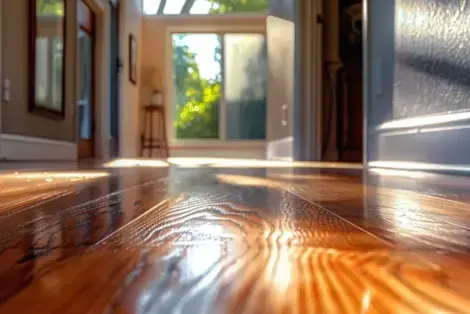
Credit: www.coit.com
Maintenance Practices
Maintaining your floors properly is essential to prevent slipperiness. Incorrect maintenance can lead to accidents and injuries. Understanding effective maintenance practices can keep your floors safe and clean. Let’s explore important tips for keeping your floors in top condition.
Proper Cleaning Techniques
Regular sweeping removes dirt and debris. This prevents buildup that can make floors slippery. Use a soft-bristle broom for best results. Mopping should follow sweeping. Use a damp mop, not a soaking wet one, to clean the floor. Too much water can create a slippery surface. Dry the floor thoroughly after mopping. Ensure all moisture is gone.
Choosing The Right Cleaning Products
Not all cleaning products suit every type of floor. Check if your cleaner is appropriate for the floor material. Wood, tile, and vinyl all need different cleaners. Avoid harsh chemicals. They can damage the floor and make it slippery. Opt for eco-friendly products. These are often safer and effective. Read the labels carefully before purchasing. Select products that promise non-slippery results.
Safety Enhancements
Slippery floors often arise from moisture, spills, or polished surfaces. Regular cleaning and using anti-slip mats can help. Identifying the cause is key to enhancing safety and preventing accidents.
Safety enhancements can prevent accidents on slippery floors. These measures protect everyone in the home. They make floors safer and reduce slip risks.Anti-slip Treatments
Anti-slip treatments help improve floor grip. They are easy to apply and effective. These treatments can be sprays or coatings. Some are permanent and work well on tiles, wood, and concrete. They create texture on the floor surface. This texture increases friction and reduces slipperiness. Choose the right treatment for your floor type. Many options cater to different needs and preferences.Area Rugs And Mats
Area rugs and mats are excellent for safety. They add traction and prevent slips. Place them in high-traffic areas, like hallways and kitchens. Choose rugs with non-slip backing. This feature keeps them in place and prevents movement. Mats can be used in bathrooms and entryways too. They soak up moisture and reduce slipperiness. Regularly clean rugs and mats to maintain effectiveness. Dust and dirt can lessen their grip. A clean rug ensures maximum safety for everyone.Diy Solutions
Slippery floors often result from moisture, cleaning residues, or worn surfaces. Identifying the cause is key to finding solutions. Simple DIY fixes like non-slip mats or vinegar cleaning might help reduce the slipperiness efficiently.
Slippery floors can be a real hazard in your home, but before you rush to buy expensive products, consider some DIY solutions that are both cost-effective and easy to implement. Imagine being able to walk across your kitchen without the fear of slipping, or letting your kids run around without constant worry. These simple tricks can help you regain your peace of mind and make your floors safer for everyone.Homemade Anti-slip Mixtures
One of the easiest ways to tackle slippery floors is by creating homemade anti-slip mixtures using ingredients you probably already have. A popular option involves mixing one part vinegar with two parts water in a spray bottle. The vinegar helps to cut through any residue that makes your floor slick. Spray it lightly over the floor and wipe it with a clean cloth. Another option is to make a paste using baking soda and water. Apply this paste to the slippery areas and let it sit for a few minutes before scrubbing it away. Baking soda’s gritty texture provides extra grip and helps remove any built-up grime. Have you ever tried these solutions and found them surprisingly effective?Surface Texturing
Surface texturing is another practical method to reduce slipperiness and increase traction. This can be done by using simple materials like sandpaper or a textured mat. Lightly rub the sandpaper over the slippery surface to create tiny abrasions that add grip. Be gentle, though, as you don’t want to damage your flooring. For a more temporary solution, consider using textured mats or strips. These can be easily placed on high-risk areas like bathroom floors or near the kitchen sink. They’re simple to install and can be removed if needed. Have you ever considered how a small change in texture could make such a big difference? It’s amazing how these little tweaks can transform a hazardous floor into a safe, walkable surface. By using these DIY solutions, you can ensure that your home is safer for you and your family. Which method will you try first to tackle the slippery floors in your house?Professional Help
Slippery floors can be dangerous. Common reasons include spills, improper cleaning products, or worn-out surfaces. Professional help ensures a safe environment by identifying causes and providing effective solutions.
Sometimes, no matter how much you clean or adjust, your floor remains as slippery as a skating rink. That’s when seeking professional help becomes essential. Professionals bring expertise and tools to tackle even the slipperiest surfaces, ensuring safety and peace of mind. You might think you can handle it all, but sometimes calling in the experts is the best decision.When To Call An Expert
If your floor remains slippery despite regular cleaning and use of non-slip products, it’s time to call an expert. Persistent slipperiness could indicate underlying issues like improper floor coating or moisture problems that need professional attention. Also, if the floor is in a high-traffic area, delaying professional help could lead to accidents. Beyond these signs, consider the frequency of slips and falls. Have you or others experienced near-misses or actual falls? These incidents shouldn’t be taken lightly. Professionals can assess the situation and provide tailored solutions.Benefits Of Professional Services
Professional services offer more than just a quick fix. Experts use specialized equipment and products that aren’t available to the general public. This means a more effective and long-lasting solution to your slippery floor problem. Moreover, professionals have the experience to identify root causes that you might overlook. They can recommend maintenance practices to prevent future slipperiness, saving you time and effort in the long run. Think about the peace of mind you’ll gain. Knowing that experts have addressed your slippery floor can relieve stress. You can walk confidently across your floor without the fear of slipping. Have you ever tried everything on your own only to find the problem persists? It might be time to let the experts handle it. Their specialized knowledge can turn a daunting task into a simple process, ensuring your floor is safe for everyone.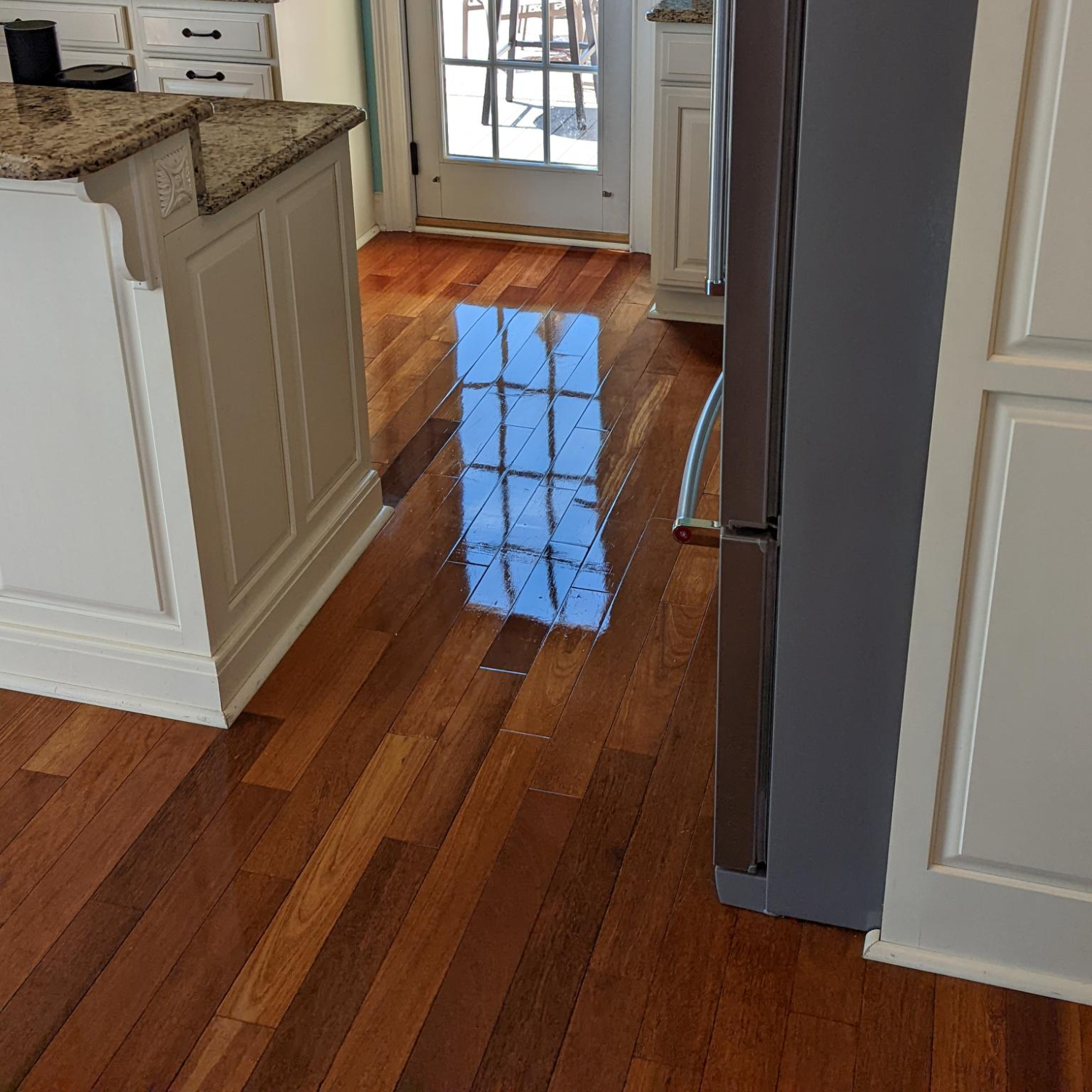
Credit: www.zerorez.com
Frequently Asked Questions
Why Is My Floor Slippery After Cleaning?
Residue from cleaning products can create a slick surface. Ensure thorough rinsing to remove any leftover cleaner.
How Can Humidity Cause Slippery Floors?
High humidity can make floors damp. This moisture can lead to a slippery surface, especially on tile or wood.
What Types Of Flooring Are Most Slippery?
Tile and polished wood are often slippery. Especially when wet or if treated with certain waxes.
Can Over-waxing Floors Make Them Slippery?
Yes, excessive wax can create a slick surface. Use the recommended amount for safety and traction.
How Do I Make My Floors Less Slippery?
Use non-slip mats or rugs. Clean with products designed to reduce slipperiness for safer floors.
Conclusion
A slippery floor can be more than a nuisance. It’s a safety risk. Identifying the cause is the first step. Cleaning products, spills, or worn surfaces often play a role. Regular maintenance helps prevent accidents. Simple changes can make a big difference.
Use non-slip mats in high-traffic areas. Check for leaks and fix them promptly. Choose cleaning products wisely. Safe floors lead to peace of mind. Protect your home and loved ones. A little effort now saves trouble later. Keep floors safe and slip-free.
Every step counts toward a safer home environment.

